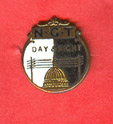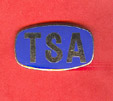Night and day
The National Guild of Telephonists was formed on 5 March 1928 as a breakaway from the Union of Post Office Workers (UPW).
In 1927 a large number of night telephonists began with holding their subscriptions from the UPW. These members demanded the right to handle their own negotiations and wanted to form a separate branch in the General Post Office. The UPW agreed a separate branch but not separate negotiations. The telephonists decided to withdraw from the UPW and formed the National Guild of Telephonists.
The members persuaded their representative on the UPW Executive Council, Edgar Lansbury (who was the nephew of Labour politician George Lansbury) to leave the UPW as well.
The NGT joined together with other breakaway post office unions in the National Federation of Post & Telegraph Clerks.
In 1928 the NGT secured recognition for night telephonists in London where they had 1,000 members. A year later they gained national recognition jointly with the UPW and in 1934 recognition in Northern Ireland.
Throughout its existence the NGT failed to obtain recognition for its women members even though, up until the 1950s it had more women members than the UPW.
Lansbury, who was a Guild Socialist and a strong supporter of strike action was appointed London Secretary and in 1945 General Secretary. The NGT was different to the majority of breakaway unions because in Lansbury they had a capable officer who was more left wing than most of the leaders of TUC unions. Most of the other breakaways were “non-political” or right wing.
Although the NGT never had more than 12,000 members it successfully ran its own insurance scheme, sick fund, mutual aid fund and education courses for branch officers.
The Post Office attempted to rationalise the number and structure of the trade unions it negotiated with and encouraged conciliation and merger between the unions. In 1960 the UPW offered the NGT merger on the basis of separate branches, separate voting at a sectional conference and employment of NGT officers. The NGT refused the offer.
The UPW tried again in 1969 by offering the previous deal plus two seats on the UPW reserved for telephonists and the employment of the NGT General Secretary as UPW Assistant Secretary. The NGT leadership recommended acceptance, however the membership voted a year later to reject the deal by 2 to 1.
The Post Office then decided to derecognise the weakened union.
The NGT responded by changing its name to the Telecommunications Staff Association (TSA) so broadening its potential membership base.
Using the 1971 Industrial Relations Act the TSA pursued recognition through the courts until 1974 when it lost the case.
In 1978 the TSA transferred its engagements to the Engineering and Electrical Staff Association, the white collar section of the Electrical, Electronic, Telecommunications and Plumbing Union (EETPU).
Filed under: Histories | Tagged: breakaway, eetpu, industrial relaions act, tsa, upw | 1 Comment »




